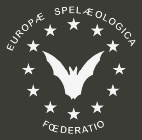Rock of the Year
Rock of the Year 2022: Gypsum and Anhydrite
The "Rock of the Year" has been selected since 2007 by an expert board of trustees under the auspices of the Professional Association of German Geoscientists (BDG). Gypsum and anhydrite are not only wide-spread construction materials, but also source rocks of numerous geotopes, according to the expert board of trustees for the selection of the Rock of the Year. The geoscientists particularly emphasized the situation in the gypsum karst landscape of the Southern Harz: "Lean grasslands, limestone beech forests, gypsum steep slopes, rocky meadows, spring swamps, water-filled sinkholes, stream floodplain forests, to name but a few, form the most diverse and species-rich habitats. In a spectacular way, large lobes of anhydrite hang from ceilings and walls in the Barbarossa Cave at Kyffhäuser in Thuringia," the BDG says.
Gypsum is a much-used raw material in the construction industry for dry interior finishing (plasterboard, screeds, plasters) and as an additive for the production of cement. Around ten million tons of gypsum are produced in Germany every year, 45% of which comes from natural gypsum extraction in quarries and 55% from FGD gypsum. FGD gypsum is produced as a by-product in flue gas desulfurization plants (FGD) of coal-fired power plants. With the coal phase-out resolved by the German parliament, FGD gypsum will not be available anymore in the long term. This increases the pressure on natural gypsum reserves by the gypsum industry. However, official and association nature conservation, as well as renowned national and international scientists*, see the mining of natural gypsum as a major threat to unique ecosystems. The president of the International Union of Speleology, Dr. George Veni, recently sharply criticized the plans for new mining areas with reference to the worldwide uniqueness of the Southern Harz gypsum karst landscape.
An alliance of civil society organizations already called on the new German government in the fall of 2021 to phase out natural gypsum mining by 2045 and to immediately stop issuing permits for new mining areas. In a joint position paper, the GRÜNE LIGA, Naturschutzbund (NABU), the Bund für Umwelt und Naturschutz Deutschland (BUND), the German Speleological Federation (VdHK) and the Architects4Future (A4F) initiative call for the preservation of rare natural landscapes and a fundamental rethink in the construction sector.
Further information:
Geowissenschaftliche Mitteilungen - GMIT 86: „Gestein des Jahres 2022 sind Gips- und Anhydritstein“ from page 25 ff.
https://e-docs.geo-leo.de/handle/11858/9617



